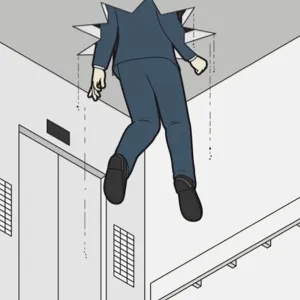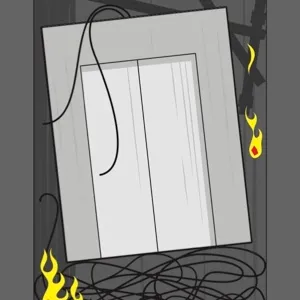1. Sit tight

Unless the building suffers catastrophic damage, such as during the World Trade Center attacks of 2001, lifts almost never fall. A lift has between six and 12 independent cables and each one is strong enough to support a fully loaded lift. If all the cables fail, brakes will automatically clamp onto rails lining the lift shaft.
2. Don't jump

Jumping up at the last moment, before the lift hits the bottom, only works in cartoons. Even if you were somehow strong enough to leap fast enough to negate your falling velocity, you would just smash your head against the lift ceiling at the same speed you had been falling!
3. Fall from the top floor

In 1945 a B-25 bomber crashed into the Empire State Building and damaged the lift cables. Betty Lou Oliver fell 75 storeys, breaking her neck, back and pelvis, but survived. The huge length of steel lift cables hanging beneath the lift car coiled into a springy mat at the bottom of the shaft and this partly cushioned her fall.
Subscribe to BBC Focus magazine for fascinating new Q&As every month and follow @sciencefocusQA on Twitter for your daily dose of fun science facts.